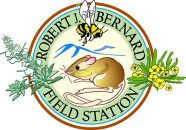Dipman, Madison (2015)
Factors driving early decomposition processes in low elevation habitat types of southern California.
Bachelor of Arts, Pomona College, Biology.
Advisor: Wallace Meyer.
Type conversion of California sage scrub (CSS) to non-native grasslands is dramatically changing the landscapes in low elevation areas in Southern California. Because type conversion alters many functional attributes and critical ecosystem services (e.g., carbon storage), it is necessary to assess how these ecosystems function following landscape transformations. Litter decomposition is a key ecosystem process that releases carbon to the atmosphere and provides nutrients in forms that can be used for plant and microbial respiration. Broadly, litter decomposition is influenced by factors related to litter quality, climate (e.g. temperature, moisture, and UV radiation), and site quality, including the microbial communities and soil fauna. In this experiment, we manipulated litter quality (C:N), UV radiation, and macroinvertebrate access in native CSS and non-native grassland habitat types to provide a framework for understanding the factors driving early (first 6 months) decomposition processes in the Los Angeles Basin. Litter type, UV, macroinvertebrates, and habitat all affected the rate of decomposition; however, UV radiation played the largest role, and its relative contribution was dependent on both the habitat and litter type. Decomposition was accelerated in the grassland, which supports previous research that type-converted grasslands store less C in stable pools than native CSS and contradicts work from studies in grass-invaded CSS systems. These findings highlight that all four factors, and particularly UV, should be incorporated into regional models of early decomposition processes and that the effects of type conversion on carbon and nutrient cycling may be different than those in systems experiencing invasion of non-native grasses without associated shrub loss.
